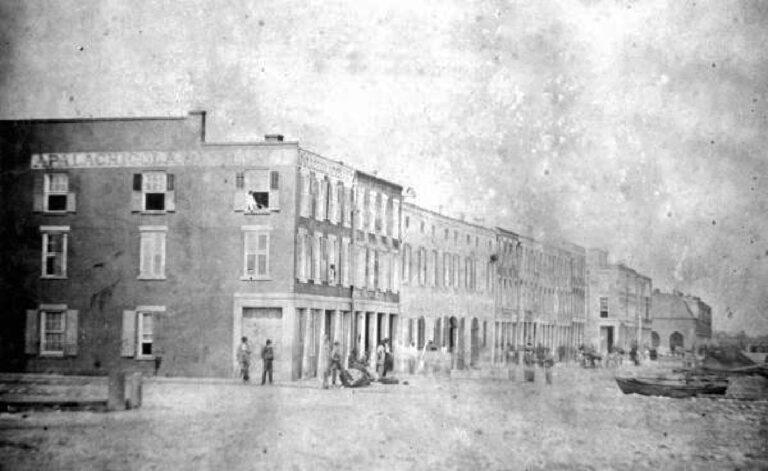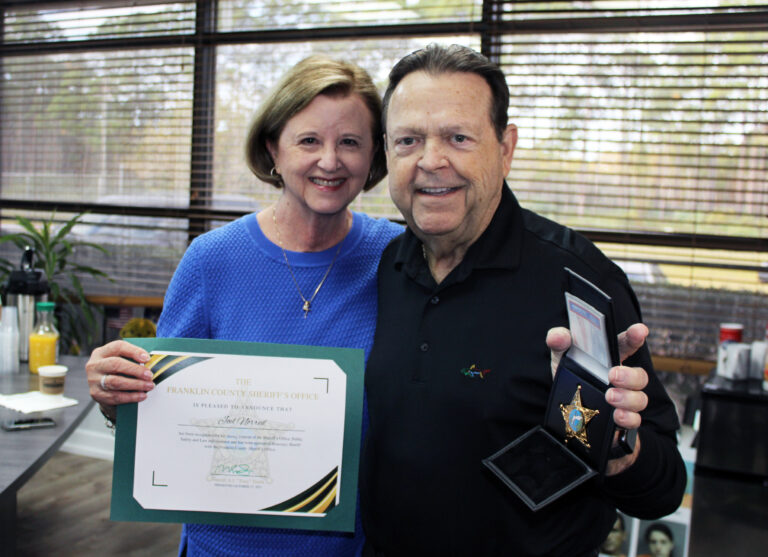Legacy Post Disclaimer
This is a #Legacy post imported from The Apalachicola Time’s previous platform. If you’re experiencing issues with this article, please email us at news@nevespublishing.com.
FCS wrestles with troubling test scores
To say the standardized test results for English and math at
the Franklin County School were lackluster would be an overstatement.
But with a tougher line on discipline and attendance, Superintendent
Steve Lanier and Principal Lawrence Pender are hoping a stable foundation of
teachers, and a stepped-up effort to encourage parents to get more involved
with the education of their children will help reverse what has been a
troubling trend at the school.
Our test scores were number 62 (out of 67 counties) in the
state two years ago, said Lanier. And we didnt test last year. What do you
expect with COVID? Think about the days they missed.
Lanier, now about 10 months into his first term, said that
out of 117 students who started the 2020-21 in virtual school, 100 of them
failed, and the Florida Department of Education ordered the district to return
them to the in-person classroom.
If parents wanted their kids to stay home we let them stay
home, he said. And we were ordered to bring them back and stick them back in
brick and mortar.”
They were already a semester behind, Lanier said. It was
a bad year. We saw kids running around all over the place when there was supposed
to be virtual learning.
To understand just how challenged the scores were in the
third through eighth grades at Franklin County, begin with the numbers of those
who scored a Level 1, the lowest rung of the five tiers and a score that indicates
the student is likely at least one year behind in proficiency, if not more.
“They are highly likely to
need
substantial
support for the
next
grade,” reads the state report on what these scores mean.
Among third graders, in English, 52 percent were at level 1,
with only 20 percent at grade level or better, 34 percentage points below
the state average. In math, 65 percent were at level 1, and only 18 percent at
grade level or better, 33 percentage points below state average.
Among fourth graders, the results were little changed, with
63 percent at level 1, and 23 percent showing proficiency in the subject, 31
percentage points below state average. In math, the results were slightly
better, with 45 percent at level 1, and 35 percent at grade level or better, 18
percentage points beneath state average.
Among fifth graders, there was an uptick in the numbers of students
posting level 2 scores, but still, the level 1 numbers in English were at 30
percent, with 28 percent of the grade level showing proficiency, 26 percentage
points below state average. In math, 58 percent of the students were at
level 1, with only 14 percent at grade level or better, 37 percentage points
below the state average.
Among sixth graders, the results in English were somewhat
better, with 48 percent at level 1, and 32 percent at grade level or better, 20
percentage points below the state average. In math, the test results were
worse, with 57 percent at level one, and 19 percent evidencing proficiency, 26 percentage
points below the state average.
In the seventh grade, the English results showed 56 percent
at level 1, with 27 percent at grade level or better, 21 percentage points
below the state average. In math, the results were much the same, with 58
percent at level 1, and 18 percent showing proficiency, 26 percentage points
below the state average.
In the eighth grade, the results were little changed, with
56 percent at level 1 in English, and 26 percent at proficiency or better, which
was 26 percentage points below thew state average. In math it was much the same
story, with two out of three students at level 1, and 13 percent at grade level
or better, 24 percentage points below the state average.
In the ninth grade, which includes students from the
Apalachicola Bay Charter School, which posted better test results in its
elementary and middle school ranks, 44 percent of the students in English were
at level 1, and 34 percent were at proficiency.
In 10th grade English, 38 percent were at level
1, and 38 percent were at grade level or better, just 13 percentage points
below the state average.
Lanier is outspoken when it comes to analyzing why these
scores are so low, and he notes that the movement of students to the ABC
School, often prompted by their motivated and involved parents, is one factor.
Our grades would be higher, he said. They have their fair share
of kids that have low scores too. You need to have two parents that are
involved, and much depends on how much parents are involved.
Were advancing kids that dont stand a chance to pass,
Lanier said. We have kids who are worried if theyre going to have dinner, much
less whether theyre going to sit down and do homework. And when you have
the meth problem, it makes it difficult on some of these kids.
He said Penders steps towards enforcing discipline
will help. It used to be theyd be right back in there (the classroom) the
same day, he said.
Lanier also noted that filling most all the teaching vacancies
prior to the start of school may also help.
Pender said that hes familiar with the challenges, and knew
going into the job two years ago what he was up against.
We could have been an F school last year, he said. This
is not the first low performing school Ive been at.
A forest fire, a hurricane, COVID-19, none of that helped,
Pender said.
We had kids who were not in school for six to nine months,
he said. I dont think virtual works; we were handicapped because of that
void.
Weve implemented some new rules, Pender said. My job is
to get the children up to where they need be.
I dont think in recent years education has been important
to these kids. They bubbled in answers (on the tests). Some of these kids go home
to wheres theres not a culture of education, he said. My challenge is to
change the climate, to change peoples perception of what school is supposed to
be.
He said he plans to stress more hands-on learning, create
teams that can work with kids to give them what they need, and redouble the
focus on the lowest-performing students.
Im going to do everything I can to make it a successful year
for these children, Pender said. Im going to do everything I can to boost
their morale and feelings about themselves.
I want them to be successful, he said. I want them to be
prepared.





Meet the Editor
David Adlerstein, The Apalachicola Times’ digital editor, started with the news outlet in January 2002 as a reporter.
Prior to then, David Adlerstein began as a newspaperman with a small Boston weekly, after graduating magna cum laude from Brandeis University in Waltham, Massachusetts. He later edited the weekly Bellville Times, and as business reporter for the daily Marion Star, both not far from his hometown of Columbus, Ohio.
In 1995, he moved to South Florida, and worked as a business reporter and editor of Medical Business newspaper. In Jan. 2002, he began with the Apalachicola Times, first as reporter and later as editor, and in Oct. 2020, also began editing the Port St. Joe Star.